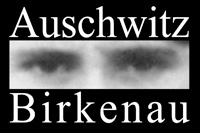




Unique nature of the Auschwitz Museum and Memorial
The former Nazi German Auschwitz concentration and extermination camp is the most recognizable symbol and place of genocide in the world. The Memorial Site covers two preserved parts of the camp: Auschwitz I and Auschwitz II-Birkenau, in a total area of 191 hectares (472 acres), including 20 hectares (49 acres) of the Auschwitz I camp and 171 hectares of the Auschwitz II-Birkenau camp.
Its uniqueness is proved by the original terrain and objects, ruins and traces of the Holocaust and genocide committed there. At the site, one will find: areas with human ashes, ruins of gas chambers and crematoria, places where SS doctors carried out selections, roads along which people were driven to the gas chambers, places where families awaited their death, places where prisoners rebelled and were executed. One of the most terrifying pieces of evidence of the crimes is also exhibited in the former Auschwitz I concentration camp: almost two tons of female hair cut from the victims.
The Auschwitz Memorial is more than extensive grounds and original camp blocks, barracks, and guard towers. It is also tens of thousands of objects of a special nature, special meaning, and special symbolism. Above all, it is the personal possessions brought by deportees and found at the site after liberation. They make up a unique collection of items connected with the suffering of the people deported to Auschwitz to be killed immediately, and with those forced into slave labor by the Germans. It is also the objects connected with the life of prisoners inthe camp, which bear testimony not only to the primitive living and hygienic conditions and starvation, but also with attempts to preserve humanity behind the barbed wire of Auschwitz.
Conservation
More than 100 thousand objects and archival items, 150 preserved buildings, and approximately 300 ruins, including the remains of four gas chambers and crematoria in Birkenau, over 13 km of fence with 3.6 thousand concrete posts and many other elements are under the care of highly-qualified conservators having one of the most modern specialist laboratories in the world at their disposal.
The International Center for Education about Auschwitz and the Holocaust
One can teach about Auschwitz and the Holocaust anywhere. Only at the Auschwitz Memorial is it possible, however, not only to get to know the history of the camp operation and gain direct access to the first-hand accounts of witnesses, but also to see the evidence of the Extermination with our own eyes: the ruins of the gas chambers, crematoria and other leftover camp remains.
The Museum’s educational mission is realized by the International Center for Education about Auschwitz and the Holocaust set up by the Polish government on the initiative of the survivors. The Memorial is visited annually by more than a million people from all over the world. Most of them are accompanied by qualified guides-educators trained at the Centre.
ICEAH also organizes post-graduate studies, seminars, conferences, stays and study trips, and workshops for teachers and students from all over the world.
Art collection
The Museum’s collection of art connected with the Auschwitz camp is unique and the largest of its kind in the world. Its great historical and emotional value makes the camp art exceptionally valuable, with a universal message that everyone who sees it can understand.
Archive
The archive collection includes tens of thousands of camp documents, approximately 39 thousand negatives of photographs of newly registered prisoners as well as almost 2.5 thousand family photos of Jews deported to Auschwitz for extermination.
